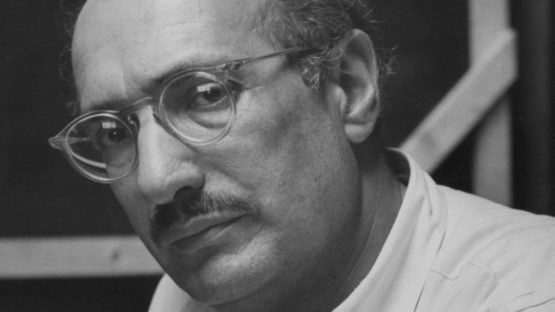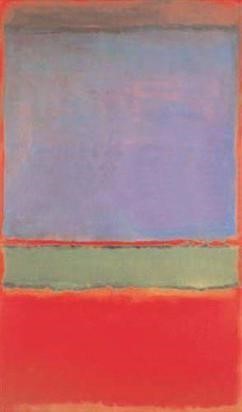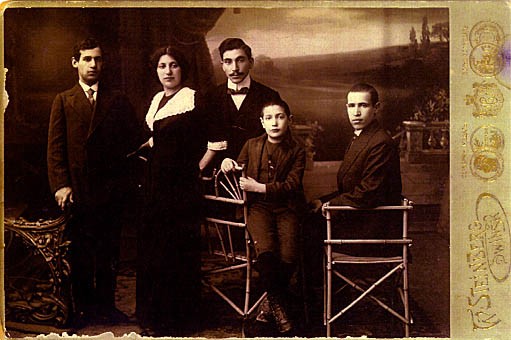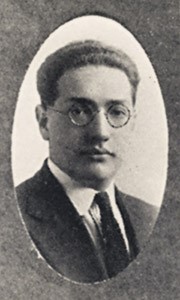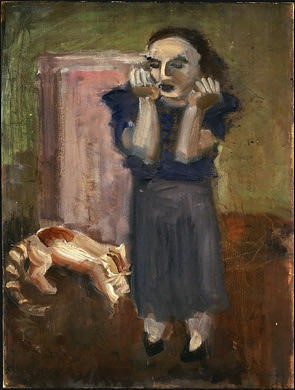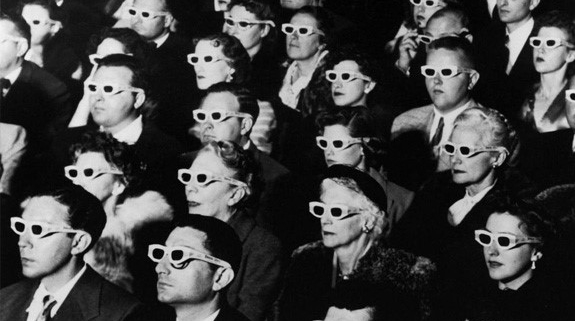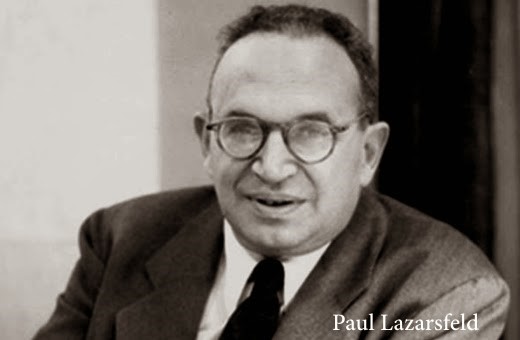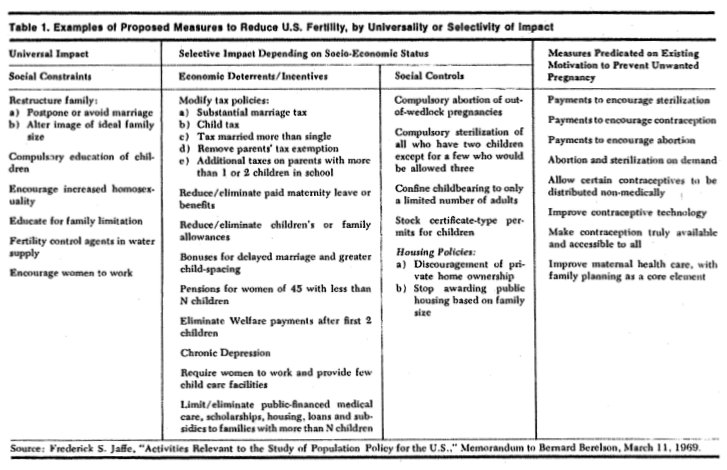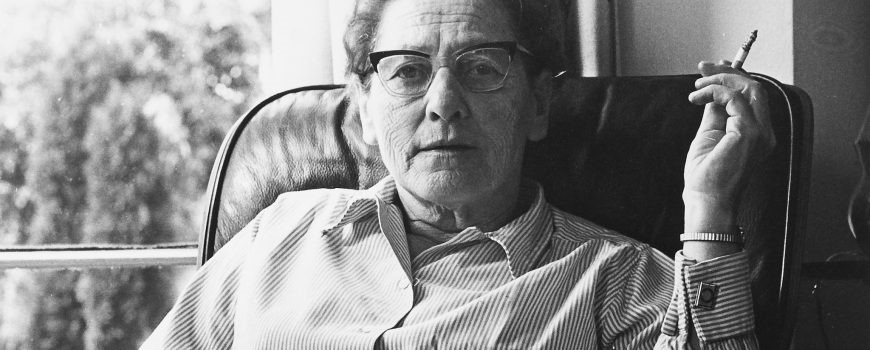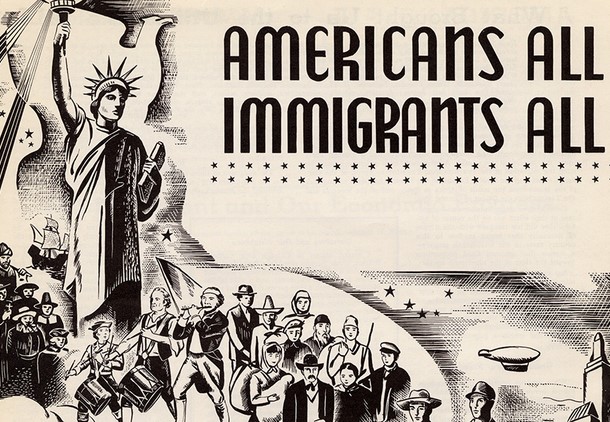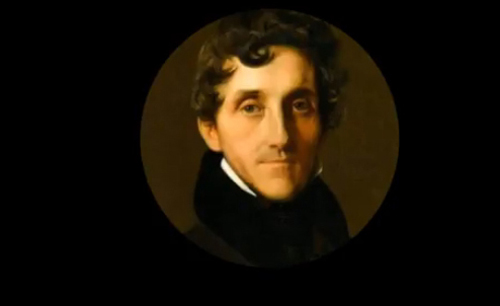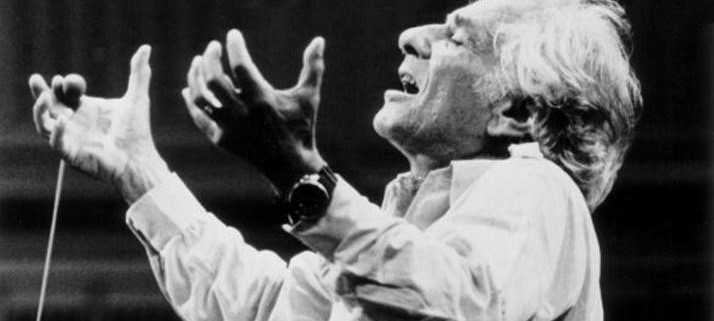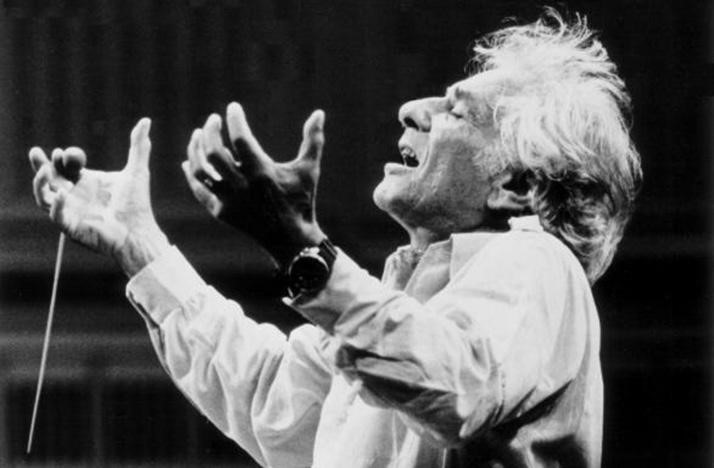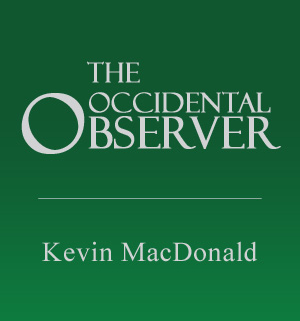Mark Rothko, Abstract Expressionism, and the Decline of Western Art, Part 2 of 3
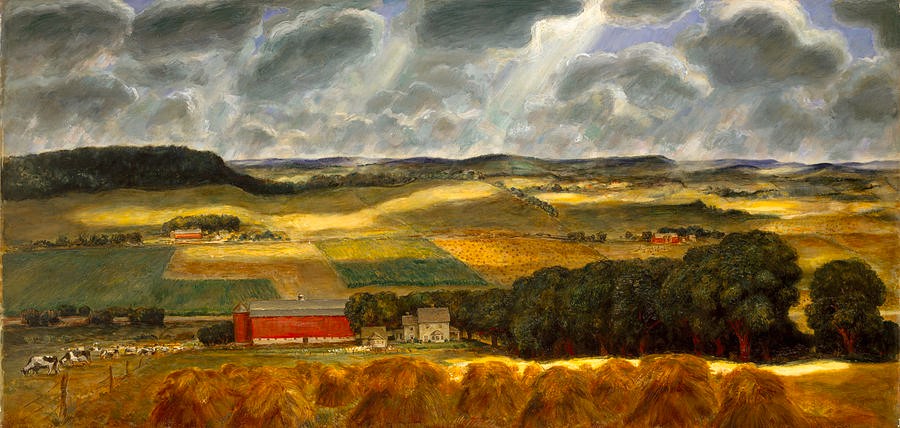
Wisconsin landscape by John Steuart Curry (1938-39)
Creating a New “American” Art
Before the rise of Abstract Expressionism in the 1940s, the American art scene was defined by two main currents. The first were the Regionalists (e.g. Grant Wood, Thomas Hart Benton and John Steuart Curry) who used their own signature styles to portray the virtues of the hard-working rural American population. The second group were the artists of Social Realism (e.g. Ben Shahn and Diego Rivera), whose work reflected urban life during the Great Depression and their devotion to international socialism. Neither was interested in abstract art, and despite their political radicalism the Social Realists held rather conservative attitudes to figurative representation. While these two styles dominated, the artists of the nascent New York School “met frequently at the legendary Cedar Bar, where they discussed their radical theses. They argued endlessly about the problems of art, about how to effect a total break with the art of the past, about the mission of creating an abstract art that no longer had anything to do with conventional techniques and motifs.”[i]
The Museum of Modern Art did not yet exist; the Metropolitan Museum tended to “look down its WASP patrician nose at modernism;” and the Whitney favoured exactly the kind of American painting young Rothko most despised: scenic, provincial, anecdotal, and conservative.[ii] For a Jewish outsider like Rothko, who in 1970 declared that he would never feel entirely at home in a land to which he had been transplanted against his will, urban America was his America.
But what was on the mid-town gallery walls was, for the most part, another America altogether: big Skies, fruited plain, purple mountain majesty, the light of providence shining on the prairie. About that America Rothko knew little and cared less. Early on, he had the sense that America ought to offer an art that was as new and vital as its history; but he also wanted that art to play for high stakes, to be hooked up somehow to the universal ideas he was chain-smoking his way through. Just what such an art might look like, however, he had as yet not the slightest idea.[iii]
The New York Intellectuals (who were overwhelmingly Jewish) associated rural America with “nativism, anti-Semitism, nationalism, and fascism as well as with anti-intellectualism and provincialism.” By contrast, urban America was associated “with ethnic and cultural tolerance, with internationalism, and with advanced ideas.” Their basic assumption was that rural America “with which they associated much of American tradition and most of the territory beyond New York” had “little to contribute to a cosmopolitan culture” and could therefore be dismissed.
Artistic Expression as “Unrelated to Manual Ability or Painterly Technique”
Rothko’s skill in rendering the human form was poor, which is evident in early works like Bathers or Beach Scene (Untitled) (1933/4). Schama admits as much, noting that: “When he [Rothko] stood in the Brooklyn [Jewish Center] classroom [where he taught art classes from 1929–46] it all seemed so easy. He would tell the children not to mind the rules — painting, he said, was as natural as singing. It should be like music but when he tried it came out as a croak. It’s the work of a painfully knotted imagination. No not very good.”[iv] According to the general consensus, Rothko “never stood out as a great draughtsman and could even at times appear clumsy in the execution of his oil paintings.”[v]
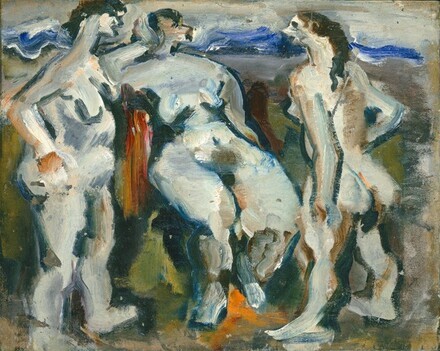
Bathers or Beach Scene by Mark Rothko (1933–34)
Rothko, in a speech in the mid-thirties, offered a quasi-philosophical rationale for the unimportance of technical skill, stressing “the difference between sheer skill, and skill that is linked to spirit, expressiveness and personality.” He insisted that artistic expression was “unrelated to manual ability or painterly technique, that it is drawn from an inborn feeling for form; the ideal lies in the spontaneity, simplicity and directness of children.”[vi] Such grandiloquent pronouncements from Rothko were not unusual, with Collings noting that “Rothko was outrageously over-fruity and grandiose in his statements about art and religion and the solemn importance of his own art.”[vii]
This tendency on his part prompted one writer to declare: “What I find amazing … is how a painting which is two rectangles of different colors can somehow prompt thousands upon thousands of words on the human condition, Marxist dialectics, and social construction.” He suggests a good rule of thumb is “the more obtuse terms an artist and his supporters use to describe a work, the less worth the painting has. By this definition Rothko may be the most worthless artist in the history of humanity.” Another critic humorously observed that:
Rothko needed to be fluent in rationalizing his existence and validating himself as a relevant artist to the average idiot who spent tens of thousands of dollars on paintings which could be easily reproduced by anyone with a pulse and a paint brush. Rothko … learned to garner attention to his paintings by getting into a frenzied drama-queen state and hysterically claiming that his works were deep, profound statements and not just indiscriminate blobs of color. They were expressions that rejected society’s expectation of technical expertise, actual talent and an artist’s evolution over time.
As well as self-interestedly seeking to redefine the nature of great art, Rothko often spoke out for the importance of “artistic freedom,” which in practice meant artistic freedom for those on the left. He became involved in the famed 1934 incident between John D. Rockefeller and the Social Realist painter, Diego Rivera. This began when Rivera was commissioned to paint a huge mural in the lobby of the main building of Rockefeller Center, the newly completed showcase of the oil baron’s ideals. Shortly before Rivera completed his work, Rockefeller dropped in and saw that the mural had a defiantly socialist message based on a heroic depiction of Lenin. He ordered the removal of the mural, resulting in its destruction. After this incident, a group of 200 New York artists gathered to protest against Rockefeller, and Rothko marched with them.[viii]
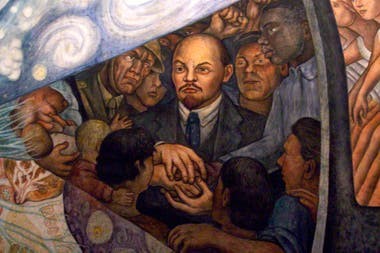
Part of Diego Rivera’s mural for Rockefeller Center
Jewish Ethnic Networking and “The Ten”
In 1934 Rothko was one of the original 200 founding members of the Art Union and Gallery Secession which was devoted to the newest artistic tendencies. A year later he became a member of the group who called themselves “The Ten” (the minimum number of Jews that can pray together). This unashamed exercise in Jewish ethnic networking was an opportunity for Rothko and his colleagues to engage in mutual admiration and promotion, and agitate in favor of “experimentation” and against “conservatism” in museums, schools and galleries.[ix] Among “The Ten” were Ben Zion, Adolph Gottlieb, Louis Harris, Yankel Kufeld, Louis Schanker, Joseph Solman, Nahum Chazbazov, Ilya Bolotovsky and Rothko. Gottlieb, in describing the group, later recalled: “We were outcasts, roughly expressionist painters. We were not acceptable to most dealers and collectors. We banded together for the purpose of mutual support.” “The Ten” acted as an alliance against the promotion of Regionalist art by the Whitney Museum of American Art, which to them was too “provincial” for words.[x]
Rejecting the local artists’ Regionalist perspectives, they were unable to define themselves as mere U.S. citizens. Instead, they presented themselves as cosmopolitan internationalists, freer and more open to incorporate the intercultural lessons of the European Modernist avant-gardes. When the fascist regimes began to decapitate these new art movements (with the closing of the Bauhaus in 1933 and the mounting of the exhibition Entartete Kunst [Degenerate Art] in Munich in 1937), great masters like Josef Albers and Piet Mondrian made their way to the United States, and American Jewish artists welcomed them with open arms.[xi]
The pronounced ingroup-outgroup mentality of “The Ten” mirrored that within the Jewish intellectual movements reviewed by Kevin MacDonald in Culture of Critique, where he notes how Norman Podhoretz described the group of Jewish intellectuals centered around Partisan Review as a “family” – a sentiment derived from their “feeling of “beleaguered isolation shared with masters of the modernist movement themselves, elitism – the conviction that others are not worth taking into consideration except to attack, and need not be addressed in one’s writing; out of the feeling as well as a sense of hopelessness as to the fate of American culture at large and the correlative conviction that integrity and standards were only possible among ‘us.’”[xii]
Within these alienated and marginalized Jewish groups was an atmosphere of social support that fostered an intense “Jewish ingroup solidarity arrayed against [what they saw as] a morally and intellectually inferior outside world.”[xiii] Despite the ethnic superglue, there were tensions within the Jewish milieu of “The Ten,” with Schama pointing out that, ”Amidst the usual Talmudic bickering of leftist factions, the denunciations and walk-outs, Rothkowitz and his comrades were all burning to make an art that would say something about the alienation, as they saw it, of modern American life.”[xiv] For Rothko, “the whole problem of art was to establish human values in this specific civilization.”[xv]
Isolationism as “Hitlerism”
Jewish gallery owners like Sam Kootz decried the “nationalist” art of the Regionalists and promoted the internationalist art of a rising generation of (often Jewish) expressionist, surrealist and abstract artists. “America’s more important artists are consistently shying away from Regionalism and exploring the virtues of internationalism,” he commented at the time. “This is the painting equivalent of our newly found political and social internationalism.”[xvi] For Rothko, like for most American Jews, the Second World War was a moment of universal moral crisis. He had only become an American citizen in 1938 and like many American Jews, “he was worried about the rise of the Nazis in Germany and the possibility of a revival of anti-Semitism in America, and U.S. Citizenship came to signify security.” Following the Molotov-Ribbentrop pact of 1939, Rothko along with others left the American Artists’ Congress to protest its continuing support for the Soviet Union.
When on the first anniversary of Pearl Harbor, the Metropolitan Museum organized an exhibition entitled Artists for Victory, consisting of 1,418 works by contemporary artists—John Steuart Curry took first prize—the Federation of Modern painters vehemently criticized the works, denouncing them as “realist and isolationist.”[xvii] Jewish abstract artist Barnett Newman took a clear stand against local American artists, declaring: “Isolationist painting, which they named the American Renaissance, is founded on politics and on an even worse aesthetic. Using the traditional chauvinism, isolationist brand of patriotism, and playing on the natural desire of American artists to have their own art, they succeeded in pushing across a false aesthetic that is inhibiting the production of any true art in this country…. Isolationism, we have learned by now, is Hitlerism.”[xviii]
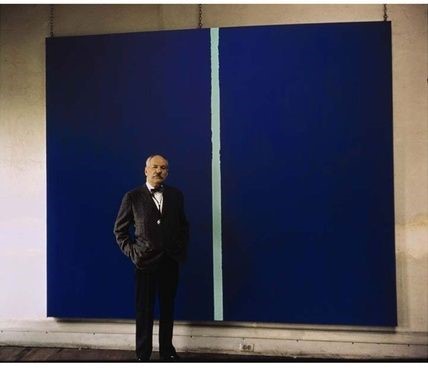 Jewish artist Barnett Newman with his “true”art untainted by “Hitlerism”
Jewish artist Barnett Newman with his “true”art untainted by “Hitlerism”
Rothko enthusiastically celebrated American entry into the war, insisting that it represented “an escape from narrow-minded isolation,” and “a reconnection with the destinies of modern history.” Schama observes that:
Now Rothko and his painter friends — so many of them originally European Jews — wanted American art to go the same way. With European civilization annihilated by fascism, it was up to the United States to take the torch and save human culture from a new Dark Ages. It was not just a matter of offering safe haven to the likes of Piet Mondrian or Guernica, but rather the authentic American way — doing something bold and fresh, taking the fight to the enemy which had classified modernism as “degenerate” and had done its best to destroy its partisans. … The Nazis had art (as well as everything else) entirely the wrong way round. The modernism they demonized as “degenerate” was in fact the seed of new growth, and what they glorified as “regenerate” was the stale leavings of neo-classicism. Their mistake was America’s — and particularly New York’s — good fortune.
This was a time when many American Jews were changing or modifying their names to sound less Jewish. In January 1940 Marcus Rothkowitz officially became Mark Rothko. During the war years Rothko’s art changed too: he produced a series of surrealistic pictures inspired by Freud’s interpretations of dreams, C.G. Jung’s theories of the collective unconscious, and ancient Greek mythology. Nietzsche’s The Birth of Tragedy was an important influence at this time.[xix] One source claims that “Amid an era of rising anti-Semitism, such themes enabled Rothko to address the unfolding catastrophe in Europe without publically proclaiming his status as a Jew.”
The Jewish Ethnic Networking Finally Pays Off
In the 1940s, Rothko’s intensive Jewish ethnic networking started to bear tangible fruit. He befriended Peggy Guggenheim, “the most voracious patroness of American avant-garde art,” who had migrated to New York in 1941. Guggenheim’s artistic consultant, Howard Putzel, “convinced her to show Rothko in her Art of This Century gallery, where she had opened in 1942, during the low point of the war.”[xx] In 1945, Guggenheim decided to put on Rothko’s first one-man exhibition at her gallery.[xxi] In 1948, Rothko invited a coterie of mainly Jewish friends and acquaintances to view his new “multiforms.” The prominent Jewish art critic Harold Rosenberg found these works “fantastic,” and called the experience “the most impressive visit to an artist” in his life.”[xxii] Rothko returned the favor, lauding Rosenberg as “one of the best brains that you are likely to encounter, full of wit, humaneness and a genius for getting things impeccably expressed.”[xxiii]
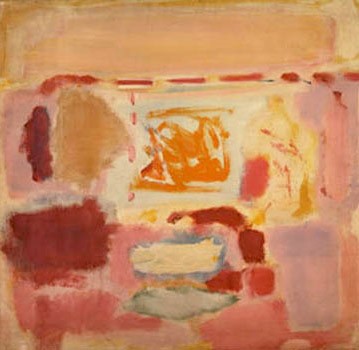
One of Rothko’s “fantastic” multiforms
When, in late 1949, Sam Kootz inaugurated his new gallery, he asked Rosenberg to select the artists for the opening show, and Rothko was inevitably among them. That year Rothko produced his first “color field” paintings, describing his new method as “unknown adventures in unknown space,” free from “direct association with any particular, and the passion of organism.” 1949 was also the year Jewish art critic Clement Greenberg expressed the hope that “national pride will overcome ingrained philistinism and induce our journalists to boast of what they neither understand nor enjoy.” Greenberg’s article appeared in the Nation on June 11, and two months later, journalist Dorothy Seiberling took up Greenberg’s challenge in an article in Life Magazine entitled: “Jackson Pollock: is he the greatest living painter in the United States?” This article, published in a magazine with a circulation of five million, made Pollock and the Abstract Expressionists famous.[xxiv] Subsequent articles by Sieberling sought to “make Abstract Expressionists like Mark Rothko, Willem de Kooning and Franz Kline accessible to a somewhat perplexed public.”
When, in 1950, the Metropolitan Museum announced an exhibition entitled American Painting Today, Rothko’s Jewish colleagues Adolph Gottlieb, Barnett Newman and Ad Reinhardt, in a letter published in the New York Times, lashed out at the curator for being hostile to “advanced art,” accusing the director of “contempt for modern painting,” and lamenting that “a just proportion of advanced art” had not been included in the upcoming exhibition.[xxv] Rothko was moved at the time to flatly reject the “whole tradition of European painting beginning with the Renaissance.” “We have wiped the slate clean,” he declared. “We start new. A new land. We’ve got to forget what the Old Masters did.”[xxvi]
In the 1950s, Rothko had arrived at his mature style, and with Katherine Kuh and Sidney Janis as his professional agents, “enjoyed both fame and material success at last.”[xxvii] Rothko’s professional ascent was fostered by these two eminent personalities of the art world: Kuh was the curator of the Art Institute in Chicago; and Janis an art dealer with the power to make or break reputations. In her biography of Rothko, Annie Cohen-Solal emphasizes the role of Jewish ethnic networking in Rothko’s rise from obscurity to celebrity in the American art scene. “Of all the ‘dynamic players’ instrumental to anchoring Rothko’s position as artist in American society,” she notes, “how not to mention that these two, in particular, were ‘assimilated’ Jews?”[xxviii]
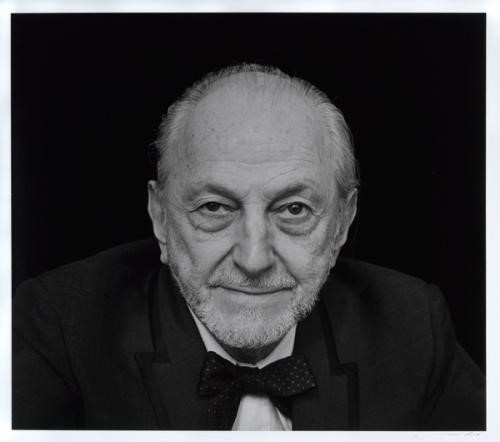
Influential Jewish art dealer Sidney Janis
As soon as she became curator of the Art Institute’s painting department in 1954, Kuh proposed a solo show of Mark Rothko, and following the exhibition, the Institute “proudly announced that the museum had purchased No. 10, 1952, for its permanent collection. ‘It is needless to tell you how greatly this transaction contributes to the peace of mind with which my present work is being done,’ Rothko admitted to Kuh.”[xxix] Meanwhile, taking on Sidney Janis as his dealer in 1954 “marked a shift into higher gear” that resulted in a “spectacular windfall for Rothko.”[xxx] Janis signing up and actively promoting Rothko settled his status “as a protagonist of international importance in the post-war art scene.” After this, Rothko’s art was declared a good investment by Fortune magazine, which led to his relationship with colleagues Clifford Still and Barnet Newman deteriorating to the point where “They accused Rothko of harbouring an unhealthy yearning for a bourgeois existence, and finally stamped him as a traitor.”[xxxi] Sales of Rothko’s work would only improve when, a few years later, Congress passed a new tax law particularly advantageous to art collectors.
The Seagram Murals
In 1958, Rothko received a contract to paint murals for the Four Seasons restaurant in the Seagram’s Building in New York. The man who approved the commission was Seagram’s American subsidiary head Edgar Bronfman Sr.—later to become President of the World Jewish Congress. The fee offered was $35,000 (a huge sum at the time). Rothko was, however, uncomfortable with the commission and the damage it might do to his bohemian reputation, and subsequently refunded the money and asked for the completed murals to be returned. The idea that his “Seagram murals,” conceived as deep metaphysical statements, would become mere background decorations, was intolerable. Nine of them were permanently installed in a room at the Tate Gallery in London in 1970.
According to an unsigned source, Rothko’s color field paintings of the 1950s and beyond “can be seen as profound mediations on the Holocaust,” with their rectangular forms inviting “associations with the haunting images of mass graves seen in American newspapers and magazines during and after the war.” The dark tones of Rothko’s Seagram murals are described as “doorways to Hell” and “likened to the rims of flames: responses with obvious Holocaust resonance.” These paintings are widely held to be Rothko’s greatest achievement. Rothko certainly thought so, immodestly equating them with Michelangelo’s frescoes in the Sistine Chapel.[xxxii]
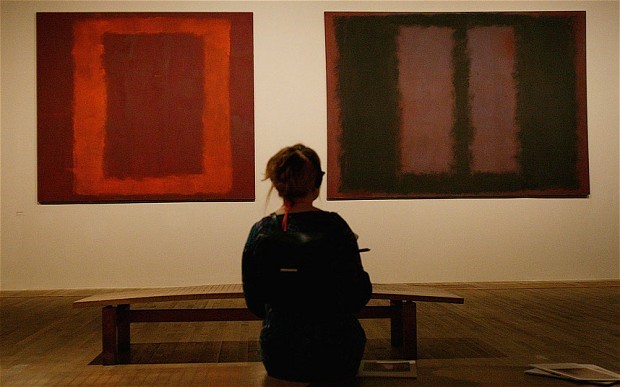
Rothko’s Seagram Murals at the Tate Modern
1961 marked the climax of Rothko’s public recognition as an artist with a comprehensive exhibition of his work at MoMA. The man responsible, MoMA’s Jewish curator, Peter Selz, raved about “these silent paintings with their enormous, beautiful, opaque surfaces [that] are mirrors, reflecting what the viewer brings with him. In this sense, they can be said to deal directly with human emotions, desires, relationships, for they are mirrors of our fantasies and serve as echoes of our experience.”[xxxiii] Selz, alongside fellow Jew Alan Henry Geldzahler at the Metropolitan Museum of Art, was one of “New York’s reigning curators,” was, like Rothko, “born into a European-Jewish family, but he came from Munich and had immigrated to the United States in 1936, driven out of Germany by the rise of Nazism.”[xxxiv] For Rothko, “who had already encountered various secular Jews in his professional trajectory—from Peggy Guggenheim to Sidney Janis, Katherine Kuh, and Phyllis Lambert”—Peter Selz would be the one to stage Rothko’s most prestigious exhibition in the United States.”[xxxv]
Despite the cheerleading of New York’s Jewish-dominated art establishment, a few critics resisted the enthusiasm for Rothko, most notably the gentile Howard Devree who, regarding Rothko’s paintings, noted that “the impact is merely optical rather than aesthetic, the validity as a work of art negligible. Seemingly it has become necessary for the color group to increase the size of their paintings, with corresponding emptiness; to make impact and size equivalent; and, as a corollary, they escape making any valid statement.” Devree compared Rothko’s paintings with “a set of swatches prepared by a house painter for a housewife who cannot make up her mind.”[xxxvi]
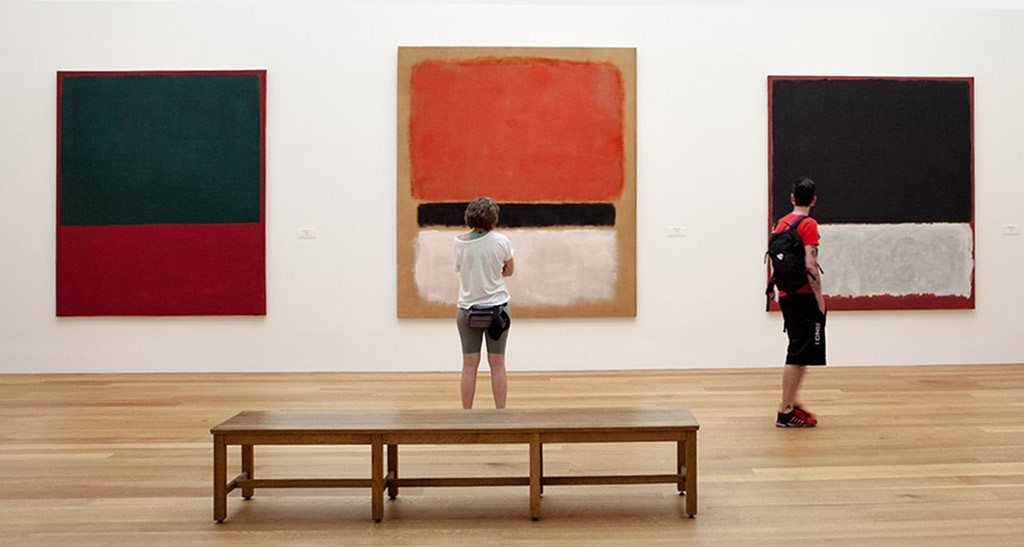
Works of ineffable genius or “a set of swatches prepared by a house painter
for a housewife who cannot make up her mind?”
Critic Emily Genauer described Rothko’s paintings as “primarily decorations,” which for Rothko was the ultimate insult. Rothko’s works were, she opined, “less paintings, as a painting is generally conceived, than theatrical curtains or handsome wall decorations.” Leading art critic and historian, John Canaday, observed “Mr Rothko’s progressive rejection of all the elements that are the conventional ones in painting, such as line, color, movement and defined spatial relationships,” before dismissing his work as “high-flown nonsense.”[xxxvii] Doubtless with Devree, Genauer and Canaday in mind, Rothko, who was intensely protective of his memory and paintings, once declared: “I hate and distrust all art historians, experts and critics.”[xxxviii]
The Rothko Chapel
In 1965 Rothko was commissioned by the oil tycoon John de Menil and his wife Dominique to paint a series of panels for a chapel in Houston, the city where they lived. Rothko adorned this chapel — a small, windowless, geometric, postmodern structure — with a collection of dark (almost black) murals essentially devoid of any content. The Jewish head of MoMA, Peter Selz, inevitably declared these paintings masterpieces, insisting that “like much of Rothko’s work, these murals seem to ask for a special place apart, a kind of sanctuary, where they may perform what is essentially a sacramental function…”[xxxix] Dominique de Menil claimed to be similarly impressed, asserting that Rothko’s colors “became darker, as if he were bringing us to the threshold of transcendence, the mystery of the cosmos, the tragic mystery of our perishable condition.”[xl]
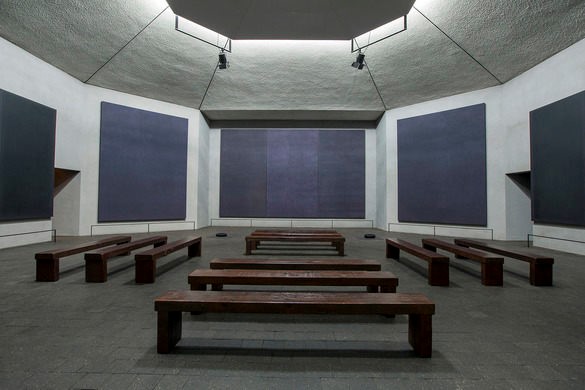
Rothko Chapel Murals: bringing us to the “threshold of transcendence?”
Rothko’s place at the summit of the New York art world was threatened three years after his MoMA exhibition when the Golden Lion was awarded to Robert Rauschenberg at the Venice Biennale of 1964. This gave prominence to the emerging artists of the Neo-Dada and Pop Art movements, and made Abstract Expressionists like Rothko seem passé.
In 1968, Rothko was diagnosed with a mild aortic aneurysm. Ignoring his doctor’s orders, he continued to drink and smoke heavily, avoid exercise, and ignore dietary prescriptions—which also exacerbated his depression and seclusion. He died in his studio on February 25, 1970 after overdosing on anti-depressants and cutting his right arm with a razor blade. He was 66 years old and left no suicide note. After Rothko’s death, 798 of his works were “procured” by his then dealer, Frank Lloyd, the Jewish director of the Marlborough Gallery, in dubious circumstances. The lengthy legal proceedings this initiated became emblematic of mounting financial corruption in the art world, and led to a growing distrust of art dealers among Americans.[xli]
Conclusion
Opinions vary widely about Rothko’s work and legacy. Many within the Jewish-dominated art establishment hail him as a genius, a creator of transcendental, spiritual works for secular times. Others cannot believe that any sane person would pay hundreds of millions of dollars for what amounts to nothing more than a large, empty canvas occupied by two colors divided into separate rectangles by a third color. What is clear, however, is that Rothko’s career and burgeoning posthumous reputation have been overwhelmingly the result of shameless barracking and hyping on the part of the Jewish intellectual and cultural establishment. Rothko’s son had the chutzpah to draw a parallel between his father’s work and that of Mozart, insisting that his father’s paintings are “the visual embodiment of a Mozart composition.”
Jews have long used their cultural dominance to construct “Jewish geniuses” to foster ethnic pride and group cohesion. It has been (and remains) a standard feature of Jewish intellectual life in the West to wildly exaggerate the significance of Jewish scientists, writers, composers, artists and intellectuals (often while downplaying the achievement of their non-Jewish peers). The absurdly exalted status accorded to Mark Rothko and his oeuvre is emblematic of this practice. Rothko is surely an artist for whom the expression “the emperor has no clothes” is particularly apposite.
[i] Baal-Teshuva, Rothko, 10.
[ii] Schama, Simon Schama’s Power of Art, 403.
[iii] Ibid.
[iv] Schama, Simon Schama’s Power of Art TV Series.
[v] Cohen-Solal, Mark Rothko, 64.
[vi] Baal-Teshuva, Rothko, 24.
[vii] Matthew Collings, This is Modern Art (London: Weidenfeld & Nicholson, 1999), 169.
[viii] Baal-Teshuva, Rothko, 26.
[ix] Schama, Simon Schama’s Power of Art, 405.
[x] Baal-Teshuva, Rothko, 26.
[xi] Cohen-Solal, Mark Rothko, 7
[xii] In MacDonald, Culture of Critique, 217.
[xiii] Ibid., 218.
[xiv] Schama, Simon Schama’s Power of Art, 406.
[xv] Schama, Simon Schama’s Power of Art TV Series.
[xvi] Cohen-Solal, Mark Rothko, 90.
[xvii] Ibid., 79.
[xviii] Ibid., 88.
[xix] Baal-Teshuva, Rothko, 33.
[xx] Ibid., 38.
[xxi] Ibid., 39.
[xxii] Ibid., 45.
[xxiii] Cohen-Solal, Mark Rothko, 97.
[xxiv] Ibid., 116.
[xxv] Ibid., 121.
[xxvi] Ibid., 126.
[xxvii] Ibid., 153.
[xxviii] Ibid., 138.
[xxix] Ibid., 144.
[xxx] Ibid., 117.
[xxxi] Baal-Teshuva, Rothko, 50.
[xxxii] Norbert Lynton, The Story of Modern Art (Oxford: Phaidon, 1989), 242.
[xxxiii] Cohen-Solal, Mark Rothko, 174.
[xxxiv] Ibid., 175.
[xxxv] Ibid.
[xxxvi] Ibid., 147.
[xxxvii] Ibid., 176.
[xxxviii] Ibid., 161.
[xxxix] Ibid., 185.
[xl] Ibid.
[xli] 206

